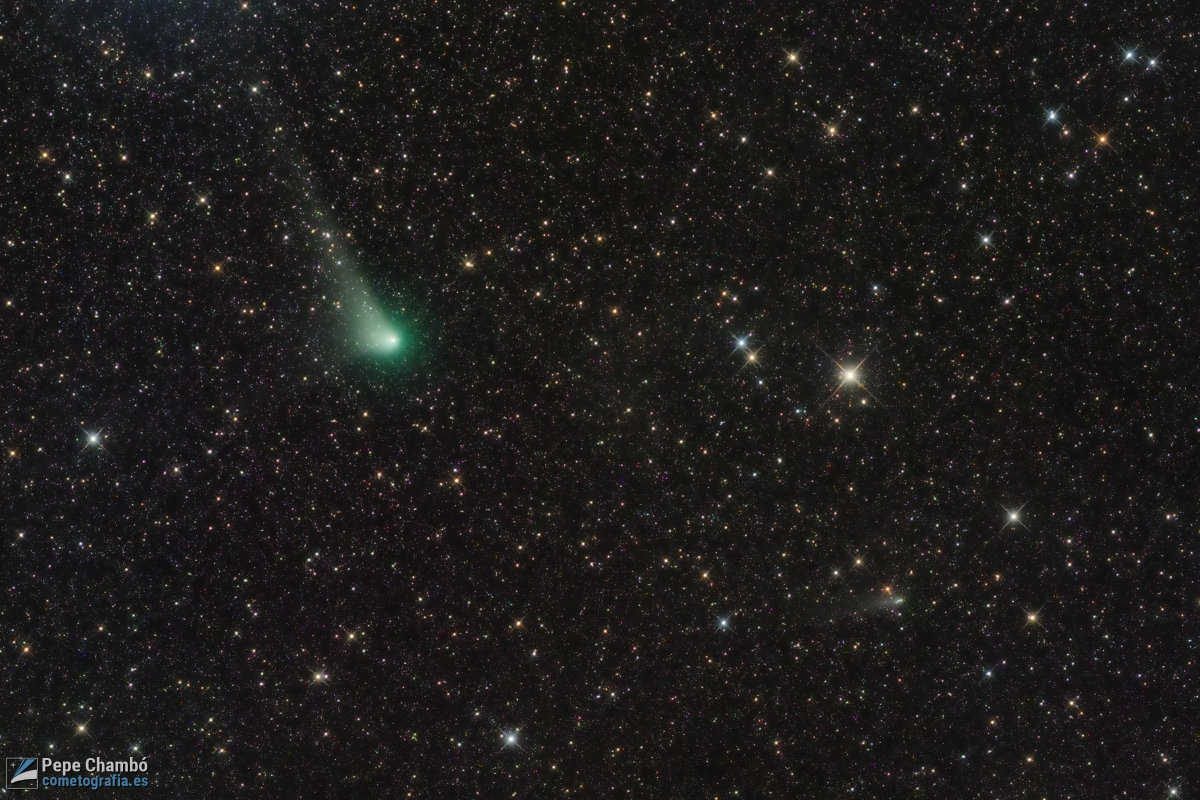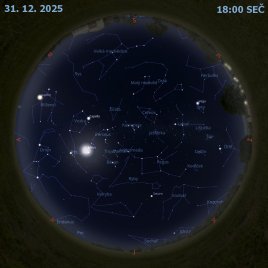Dvě komety na jižní obloze

Uznání a copyright: Jose J. Chambo (Cometografia)
Kometa C/2017 K2 (PanSTARRS), která směřuje ke svému nejtěsnějšímu přiblížení ke Slunci neboli perihelu 20. prosince, zůstává při svém pohybu na jižní obloze planety Země zajímavou podívanou pro teleskopické pozorovatele. Tato kometa PanSTARRS přiletěla ze vzdáleného Oortova mračna poprvé a na hloubkovém snímku z 21. září předvádí vlevo nahoře nazelenalou komu a bělavý, půl stupně dlouhý ohon. Hvězdnaté pole v souhvězdí Štíra (Scorpius) sdílí s další kometou 73P/Schwassmann-Wachmann 3, která je vidět asi 1 stupeň vlevo dole pod kometou PanSTARRS. Astronomové odhadují, že kometa C/2017 K2 (PanSTARRS) je na cestě z Oortova oblaku po hyperbolické dráze ke své první návštěvě už asi 3 milióny let. Kometa Schwassmann-Wachmann 3 je ovšem lépe známá. Tato periodická kometa se pohybuje po své eliptické dráze zpoza orbity Jupiteru do blízkosti orbity Země jednou za 5,4 roku. Kometa PanSTARRS na snímku z 21. září je při svém průletu nocí vzdálená asi 20 světelných minut. Kometa Schwassmann-Wachmann 3, která se od roku 1995 rozpadá, byla asi 7,8 světelných minut daleko.
Seznam odkazů v popisu
- EarthSky.org: Look for comet C/2017 K2 now in dark
- NASA: Oort Cloud
- HubbleSite.org: NASA'S HUBBLE OBSERVES THE FARTHEST ACTIVE INBOUND COMET YET SEEN
- APOD: 2022-07-21 Messier 10 a kometa
- Wikipedia: Schwassmann–Wachmann
- APOD: 2017K2_2022-09-21_web-label.jpg
- Wikipedia: 2017_K2_(PanSTARRS)
- APOD: 2022-06-04 Tau Herkulidy z vesmíru
- Cometografia.es: Cometa C/2017 K2 (PANSTARRS) y 73P/Schwassmann-Wachmann, 21-Sep-2022 Compartir
- APOD: 2006-05-13 Drobící se kometa
NASA Official: Phillip Newman Specific rights apply. NASA Web Privacy Policy and Important Notices
A service of: ASD at NASA / GSFC & Michigan Tech. U.
Odkaz na originální APOD


